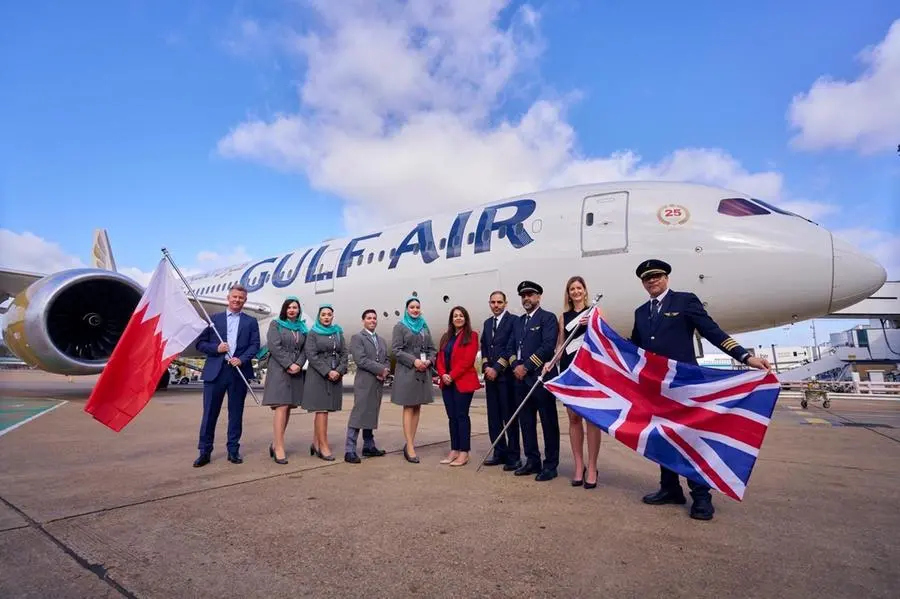Access selected deals available with budget and full-service airlines
Lock any airfare that sounds great. You don’t lose anything if you cancel it
Call us anytime for any assistance. We do not go into hibernation
Your personal and financial information stays secure with us
Gulf Air, the national flag carrier of the Kingdom of Bahrain, is headquartered in Muharraq and operates from its hub at Bahrain International Airport (BAH). Established in 1950 as Gulf Aviation, it is one of the Middle East’s oldest airlines, serving 61 destinations in 33 countries across Africa, Asia, Europe, and the Middle East as of 2025. Fully owned by Bahrain’s Mumtalakat Holding Company, Gulf Air operates a fleet of 41 modern Airbus and Boeing aircraft, carrying approximately 7.5 million passengers annually. Known for its boutique business model and traditional Arabian hospitality, the airline offers premium services under its Falcon Gold brand and holds a Skytrax Four-Star rating. Gulf Air is not part of any major alliance but maintains codeshare agreements with 15 airlines, including American Airlines and Turkish Airlines, enhancing connectivity to over 200 destinations.

Gulf Air began as Gulf Aviation Company, founded on March 24, 1950, by British pilot Freddie Bosworth, operating air taxi services to Doha and Dhahran with Avro Ansons and de Havilland biplanes. In October 1951, British Overseas Airways Corporation (BOAC) acquired a 22% stake, and by 1974, Bahrain, Qatar, Abu Dhabi, and Oman jointly purchased BOAC’s shares, renaming it Gulf Air and making it the flag carrier for the four states. The 1976 introduction of Lockheed L-1011 TriStars brought the iconic “Golden Falcon” livery, used across aircraft like Boeing 737s and Airbus A320s. Gulf Air was the first Arab airline to fly to Australia in 1990, launching services to Sydney and Thiruvananthapuram.
The 1990s saw expansion with Airbus A340-300s and routes to New York (1994–1997) and Johannesburg, but the 2000 Gulf Air Flight 072 crash (143 fatalities) and financial losses prompted restructuring. Qatar withdrew in 2002 to focus on Qatar Airways, followed by Abu Dhabi in 2005, leaving Bahrain as the sole owner by 2007. The 2002–2004 Project Falcon restructuring, led by CEO James Hogan, yielded a $4 million profit in 2004. The airline adopted a new gold-and-blue livery in 2003 and launched Gulf Traveller, an all-economy subsidiary, later discontinued. In 2019, Gulf Air retired its last Airbus A330-200s, transitioning to Boeing 787-9 Dreamliners and Airbus A320neos/A321neos. In 2024, Gulf Air added seasonal routes to AlUla, Saudi Arabia, and plans a U.S. return in mid-2025, targeting New York, pending FAA approval.
Gulf Air’s fleet comprises 41 aircraft: 10 Boeing 787-9 Dreamliners, 13 Airbus A320ceos/neos, and 18 Airbus A321ceos/neos, with an average age of 6 years. The 787-9s serve long-haul routes like London, Bangkok, and Manila, while A320s/A321s operate short- and medium-haul flights to Dubai, Riyadh, and Delhi. Ten additional A320-family aircraft and two 787-9s are expected by 2027, despite supply chain delays. The airline operates 400 weekly flights, with Manama–Dubai as its busiest route. Bahrain International Airport, handling 14 million passengers annually, supports efficient transfers (minimum 45 minutes) and is managed under the same Gulf Air Group, ensuring operational synergies.
Gulf Air’s cargo division transports 100,000 tons annually, focusing on perishables and electronics to markets like India and Europe. Codeshares with airlines like American Airlines (via London to U.S. cities) and Emirates expand its network, particularly for Indian Subcontinent traffic. In 2024, Gulf Air added 10 new destinations, including Geneva and Rhodes, and plans routes to China and the U.S. to support Bahrain’s tourism strategy.